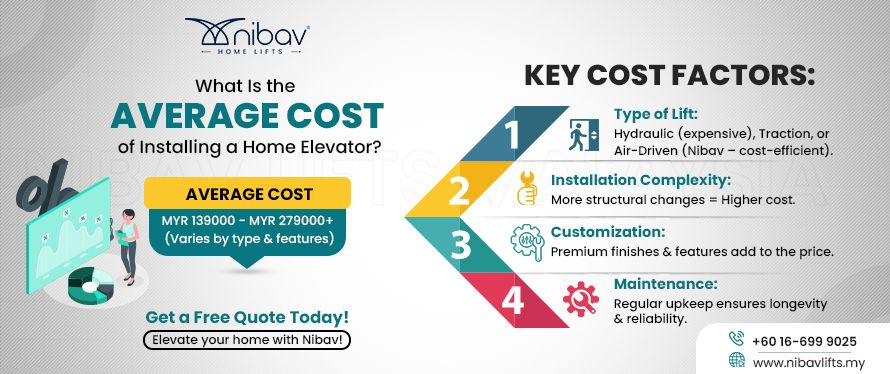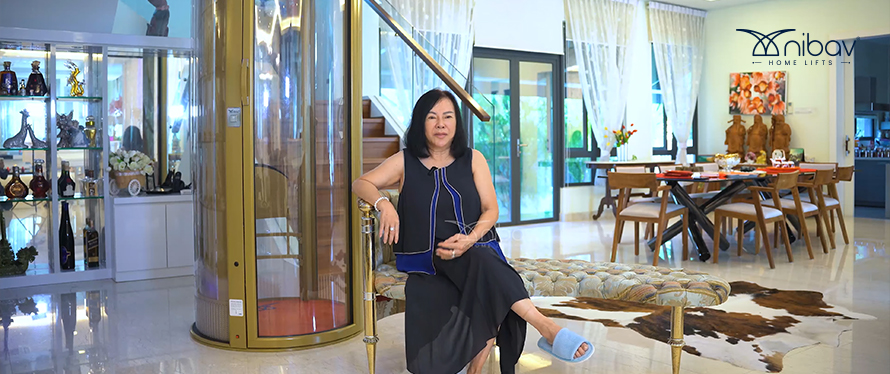Installing an elevator in a newly constructed multi-family apartment complex requires a significant investment. Elevators enhance accessibility, property value, and convenience. They also ensure the building meets current requirements and boost overall tenant satisfaction.
However, recognizing the expenses involved is vital for planning and budgeting. This document fully explains the average cost to install an elevator, factors impacting pricing, and helpful advice to make educated decisions.
Factors Influencing the Average Cost to Install an Elevator
Type of Elevator System
The type of elevator system you choose substantially affects the installation cost. Traction elevators are appropriate for taller buildings as they offer improved efficiency and speed but are more expensive.
Hydraulic elevators, commonly employed in mid-rise construction, are more inexpensive but require a machine room. Pneumatic elevators, like Nibav’s, are compact, energy-effective, and excellent for smaller structures or projects focused on sustainability.

Building Design and Requirements
Complex structures or remodeling issues might raise the cost. For instance, creating elevator shafts in uniquely built buildings requires considerable technical skills. Structural reinforcements, specific shaft sizes, and compatibility with building aesthetics further impact the price. Planning ahead of time can help avoid excessive costs.
Number of Stops and Floors
The number of stops and floors closely correlates to the cost. More stops require specialized engineering, extra materials, and a longer installation time. For example, a building with 10 stories will have much greater expenses than a three-story structure due to the additional complexity and work needed.
Customization and Aesthetic Options
Custom elements like premium interior materials, distinctive lighting, or sophisticated control panels contribute to the total cost. Customized designs, such as glass-paneled cabins or themed interiors, boost user experience and build appeal. While personalization raises expenditures, it also improves the overall value and beauty of the house.
Average Cost to Install an Elevator in Multi-Family Apartment Buildings
Typical Cost Range for Standard Elevators
The average cost to install an elevator normally ranges between MYR 139000 to MYR 279000. This estimate comprises conventional models with necessary features and no considerable modification. However, the expenses may vary according to the elevator’s size, capacity, and the materials utilized.
Comparison of Costs for Different Elevator Types
Traction elevators typically cost more because of their complex technology and adaptability to high-rise structures. They are sturdy and environmentally friendly but have a higher upfront price.
Hydraulic elevators are often more economical but require additional expenditures for a machine room. Pneumatic elevators are affordable and contemporary, making them a good choice for smaller projects emphasizing sustainability.
Regional Cost Variations
Costs might vary depending on the locale. Factors like local labor costs, material availability, and compliance with area construction standards might impact overall pricing. For instance, metropolitan locations with higher labor expenses could experience higher pricing than rural areas.
Additional Costs to Consider Beyond Installation
Maintenance and Servicing Costs
Elevators require regular check-ups and repairs to maintain their efficiency and ensure safety. Depending on the type and use of the elevator, the annual service rate for regular general elevator services ranges from MYR 5,000 to approximately MYR 15,000. Regular maintenance helps avoid breakdowns, assuring long-term reliability and tenant happiness.
Energy Efficiency and Operational Costs
Environmentally friendly elevators may have higher starting expenses but save money over time through decreased power bills. Advanced versions with clever energy-saving features can cut operating expenditures, making them an excellent long-term investment in sustainability. When planning an elevator, always include operating expenses.
Benefits of Installing an Elevator in a New Construction Multi-Family Building
Enhanced Accessibility and Convenience
Elevators promote accessibility for inhabitants, especially elders and persons with mobility problems. They guarantee that all levels are easily reached, making daily living more pleasant for everyone, particularly families with small children or heavy bags.
Increased Property Value
Adding an elevator increases home value, making it a smart investment. Properties with trendy elevators attract a larger population. The ease and elegance of elevators might justify higher selling prices.
Competitive Advantage in Market
A modern elevator can make your property stand out from the competition. It can attract more tenants and help you achieve faster occupancy rates in competitive areas. In multi-story buildings, in particular, properties with elevators tend to attract more tenants and purchasers.
Tips for Budgeting and Choosing the Right Elevator
Working with Reputable Manufacturers and Installers
Choose trustworthy manufacturers and installers with a track record of happy clients. Their expertise makes installation a breeze, and everything works as it should. Reputable organizations may give informative counsel suited to your building’s requirements.
Understanding Warranty and After-Sales Support
Analyze warranty options and follow-up assistance. A broad warranty gives peace of mind and minimizes unplanned expenditures. For long-term satisfaction, ensure the warranty covers critical components, such as the motor, control mechanisms, and cabin materials.
Future-Proofing Your Investment
Plan for future demands, such as technological updates or increased consumption. Investing in adaptive architecture that can handle technology changes saves money in the long term. Features like smart controls or energy-efficient technology may keep your elevator current for decades.
Conclusion
Installing an elevator in a newly constructed apartment complex is a good investment. The benefits are evident, from improved accessibility to raising property value. Knowing the home elevator prices and considerations allows you to make educated selections corresponding to your project’s goals and budget.
Proper planning and cooperation with qualified specialists guarantee that your elevator offers outstanding value and reliability.
FAQs
1. How much does installing an elevator in a new apartment building cost?
The price ranges from MYR 139000 to MYR 279000. Different home elevators can be modified to meet the specific requirements of the building, materials used, technology applied, and project size.
2. What factors impact the average cost of elevator installation?
Key aspects include the kind of elevator system, building architecture, number of stops, customizing choices, and regional differences. Early preparation and cooperation with professionals can help reduce these expenditures successfully.
3. Are there cost-effective options for multi-family elevator installations?
Yes, pneumatic elevators like Nibav’s are energy-effective and excellent for smaller installations. They offer modern designs at low rates and are well-suited for structures that emphasize sustainability and space optimization.
4. Why should I consider installing a pneumatic elevator like Nibav’s?
Pneumatic elevators are small, energy-efficient, and offer a contemporary design ideal for diverse building types. They need low maintenance, maintain seamless functioning, and are ecologically beneficial, making them a fantastic long-term investment.




